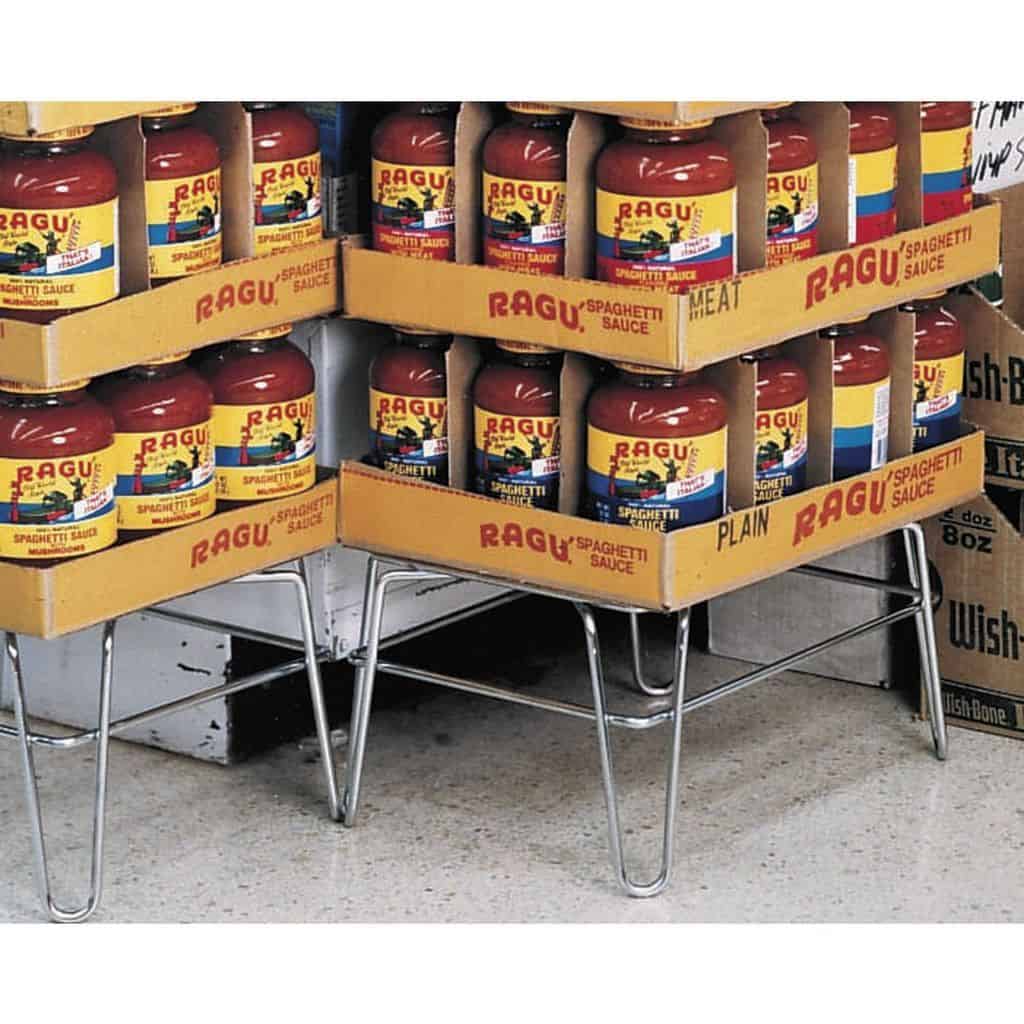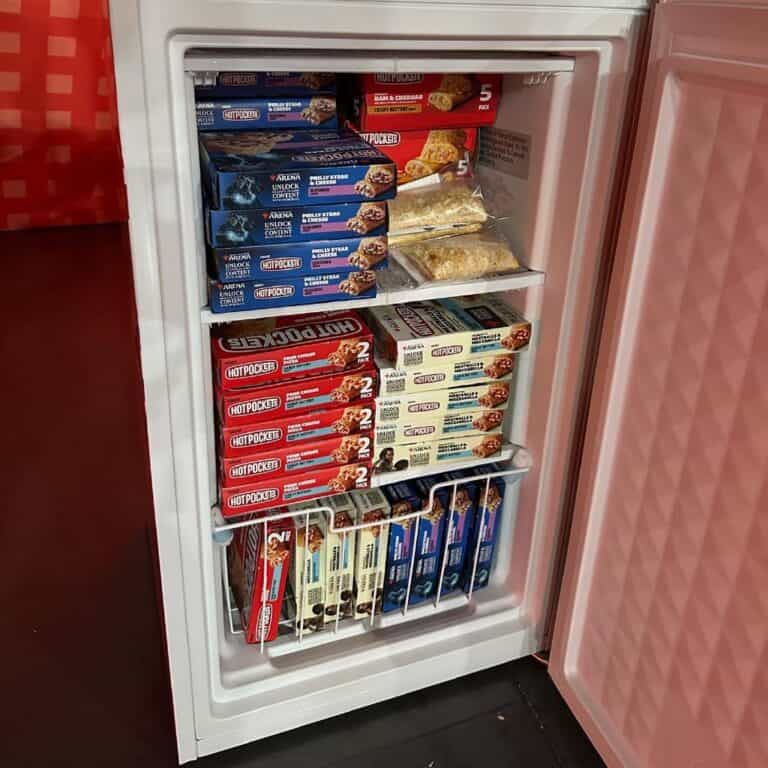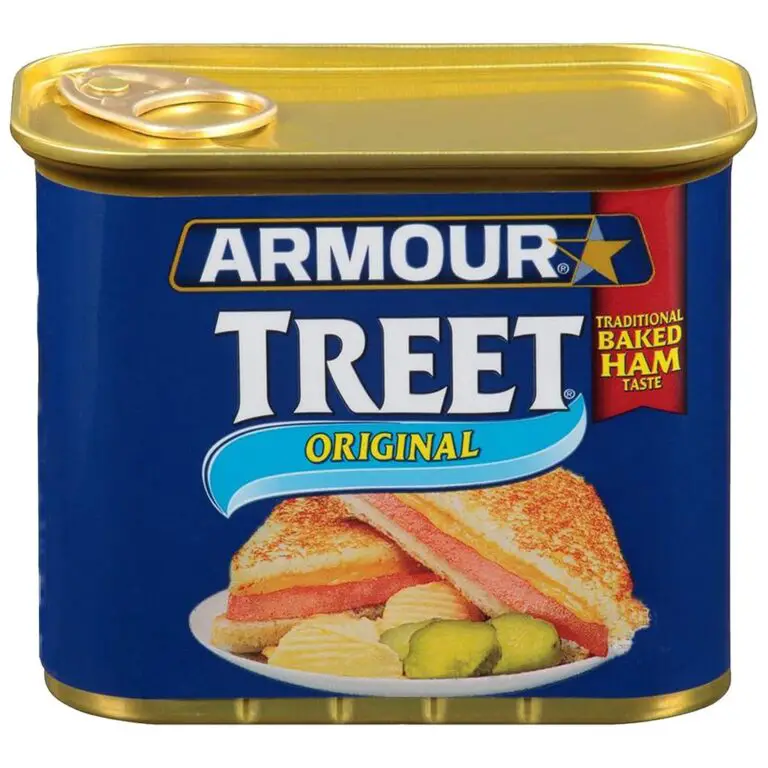How Far off the Ground Should Food Be Stored? Food Safety and Storage

We all know how important it is to store our food properly. When it comes to storing food, one question that often arises is how far off the ground it should be kept. This is an important consideration, as proper food storage can help prevent contamination and spoilage, which can lead to foodborne illnesses.
For optimal storage, food should be stored at least six inches (15 centimeters) above the floor to reduce the risk of contamination and spoilage. This applies to dry foods as well as perishable foods that require refrigeration.
In this article, we’ll explore the reasons why food should be stored off the ground, how high it should be stored, and some tips on achieving optimal food storage. So, let’s dive in and learn about the ideal height for storing your favorite foods!
The Importance of Storing Food Off the Ground
Storing food off the ground is essential for maintaining food safety and quality. When food is stored on the ground, it is more susceptible to contamination from pests, dirt, and moisture. This can lead to spoilage, mold, and bacterial growth, which can make the food unsafe to eat.
In addition to protecting food from contamination, storing it off the ground also makes it easier to clean and maintain a sanitary environment. This is especially important in commercial kitchens, where food safety regulations require that food be stored at a certain height to prevent contamination.
Factors to Consider When Storing Food Off the Ground
There are several factors to consider when deciding how far from the ground food should be stored. These include:
1. Risk of Contamination
Storing food directly on the ground can increase the risk of contamination. This is because the ground can harbor bacteria, mold, and other harmful substances that can contaminate food. Additionally, storing food on the ground can make it more accessible to pests such as rodents, ants, and cockroaches.
2. Temperature Regulation
Storing food off the ground can also help regulate its temperature. The ground can be a source of heat, especially in warm weather, which can cause food to spoil more quickly. Additionally, storing food on a cold surface, such as a concrete floor, can cause it to freeze and become damaged.
3. Humidity Control
Humidity can also be a factor in proper food storage. Storing food off the ground can help regulate its exposure to humidity. The ground can be a source of moisture, which can increase the humidity in the air and cause food to spoil more quickly.
4. Pest Prevention
Pests such as rodents and insects are attracted to food and can cause significant damage to stored items. Storing food off the ground can help prevent these pests from accessing it. Additionally, storing food in airtight containers can further deter pests.
5. Type of Food
Some types of food are more susceptible to contamination and spoilage than others. For example, perishable items such as meat, dairy products, and fresh produce should be stored off the ground to minimize the risk of contamination. Dry goods such as canned goods and packaged snacks may not need to be stored as high off the ground.
6. Storage Environment
The storage environment can also impact how far off the ground food should be stored. In a damp or humid environment, food should be stored higher off the ground to minimize exposure to moisture. In a dry environment, food can be stored closer to the ground.
7. Storage Container
The type of storage container can also impact how far off the ground food should be stored. For example, food stored in plastic or metal containers can be stored closer to the ground than food stored in cardboard boxes or paper bags. This is because plastic and metal containers provide more protection against pests and moisture.
Health and Safety Risks of Storing Food Too Close to the Ground
Storing food too close to the ground can pose several health and safety risks. One of the most significant risks is contamination from pests. Insects, rodents, and other pests are attracted to food and can easily access it if it is stored on the ground.
Contamination from pests can lead to foodborne illnesses, such as salmonella and E. coli. It can also cause spoilage and mold growth, which can make the food unsafe to eat.
Storing food too close to the ground can also make it more difficult to clean and maintain a sanitary environment. Food that is stored on the ground is more likely to accumulate dirt and debris, which can make it more challenging to keep the storage area clean.
The Recommended Height for Food Storage
The U.S. Food and Drug Administration (FDA) recommends that food be stored at least six inches off the ground. This applies to all types of food, including packaged and unpackaged products. The reason for this recommendation is to prevent contamination from pests, such as rodents and insects, that can carry harmful bacteria and viruses.
By keeping food off the ground, it becomes more difficult for pests to access and contaminate it. Additionally, storing food at a higher level makes it easier to clean the surrounding area and reduces the risk of accidental spills or leaks reaching the food.
Food may need to be stored higher if it’s in a warehouse or outdoor storage area with a lot of pests. In such cases, it is advisable to consult with a pest control professional to determine the optimal height for food storage.
Another factor to consider when determining the height at which food should be stored is the type of storage container. For example, store cardboard boxes off the ground to prevent moisture from seeping in and compromising the food.
Conversely, if food is stored in metal or plastic containers, it may be possible to store them closer to the ground. These materials are less susceptible to moisture damage.
Different Storage Methods to Keep Food off the Ground
Now that you know the recommended height for food storage, it’s essential to understand how to achieve it. Here are some tips for storing food at the recommended height:
- Use Shelving Units: One of the best ways to store food off the ground is by using shelving units. These can be freestanding or attached to the walls and can be made of various materials such as metal, plastic, or wood.
- Install Wall-Mounted Shelves: If you have limited floor space, consider installing wall-mounted shelves. These are easy to install and can be adjusted to the desired height.
- Use Pallets: If you’re storing food in a warehouse or other large storage area, consider using pallets to elevate the food off the ground. This not only helps prevent contamination but also makes it easier to move the food around using a forklift or pallet jack.
- Use Stackable Containers: Another way to keep food off the ground is by using stackable containers. These are especially useful for storing fruits and vegetables and can be stacked several layers high.
- Hooks: Hooks can be used to hang food from the ceiling or walls, which keeps it off the ground and makes it easier to access.
- Racks: Racks can be used to store food off the ground and can be made from a variety of materials, including metal and plastic.
Additional Tips for Proper Food Storage
Aside from keeping food off the ground, there are other essential guidelines for proper food storage. Here are some additional tips to keep in mind:
- Use Proper Food Storage Containers: Always use food-grade storage containers that are designed for the type of food being stored. For example, use airtight containers for dry goods like flour and sugar and moisture-proof containers for wet ingredients like sauces and soups.
- Store Food at the Proper Temperature: Different types of food require different storage temperatures. For example, perishable items like meat and dairy should be stored at temperatures below 40 °F. Storing at this temperature will prevent bacterial growth. On the other hand, dry goods can be stored at room temperature.
- Keep Food Organized: Proper organization is key to efficient and safe food storage. Label all containers with the date of storage and use the first-in, first-out (FIFO) method. This is to ensure that older items are used before newer ones.
- Clean and Sanitize Storage Areas: Regularly clean and sanitize all storage areas, including shelves, containers, and pallets. This helps prevent the growth of bacteria and other harmful microorganisms that can contaminate food.
Conclusion
In conclusion, proper food storage is essential for ensuring the safety and quality of our food. Storing food off the ground can help prevent contamination, regulate temperature and humidity, and deter pests. The ideal distance between food and the ground depends on several factors, including the type of food, storage environment, and storage container.
By following the best practices outlined in this article, you can keep your stored food fresh and safe, while minimizing the risk of foodborne illness. Remember to regularly inspect stored food for damage or contamination, rotate it regularly, and use shelves or racks to keep it off the ground. With these tips, you can be confident in the safety and quality of your stored food.







